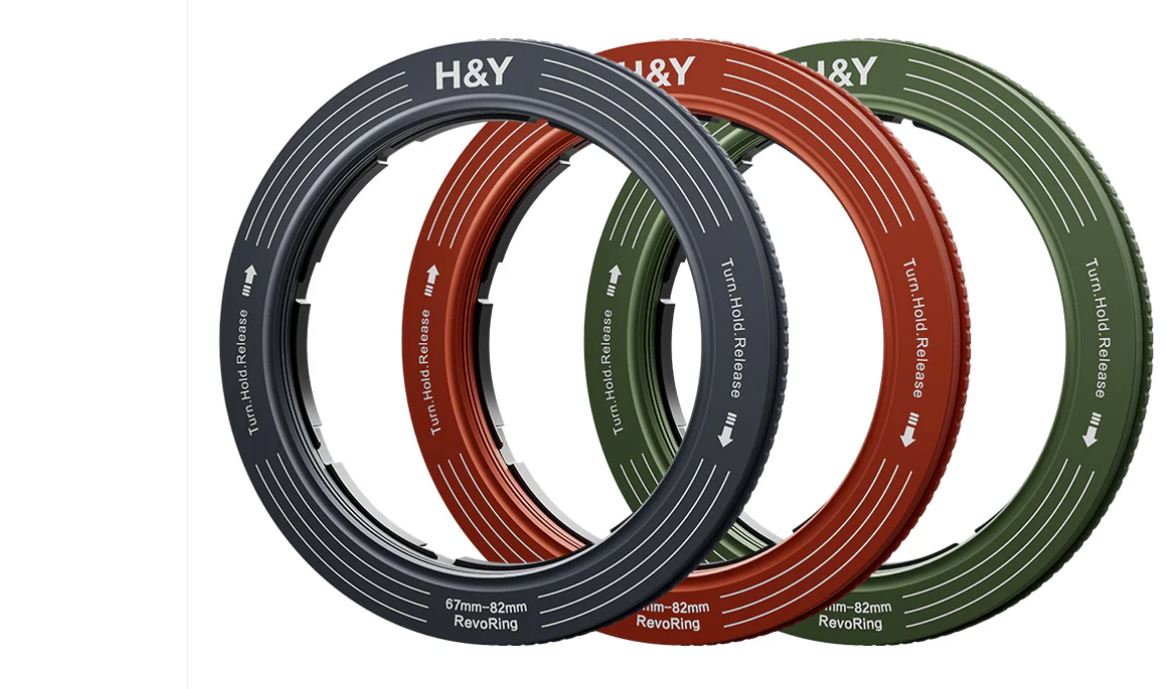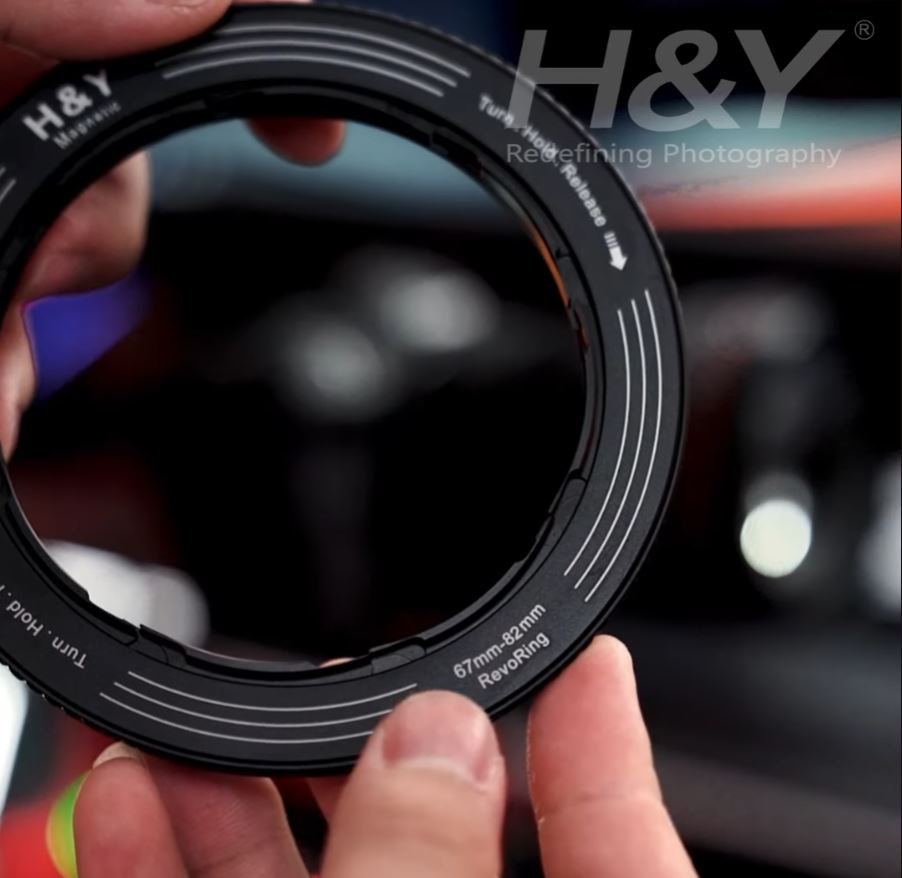H&Y’s RevoRing Review – A Deeper Look
05 Nov 2024, Posted by in Reviews, Uncategorized
H&Y’s RevoRing filter adapter system has been around for a few years now, but they’ve come out with a Mark II version of their variable ND version. I’m not actually going to review that one (because my recommendation would be to use your own VND when adopting the RevoRing). Still, it’s likely to spark some renewed interest in the setup, so it’s worth an in-depth look at the heart of the system: the adapter ring.
The RevoRing is a spring-based step-up filter adapter that can attach across a range of ring sizes. In my case, it spans a lens size from 52mm to 72mm, and allows for a 77mm filter to be attached. It’s very well made and both hefty and large. The total ring diameter is about 95mm. The RevoRing allows you to use just one ring adapter across (most of) your lenses. You can thread your favorite filter onto the front; or, as I do, attach a magnetic ring adapter to I can quickly pop any of my favorite filters (each of which has its own magnetic adapter) onto the front.
At first glance, the RevoRing seems like a no-brainer step up from other systems… but there are some caveats and nuisances.

First, your lenses may have a wider variety of ring sizes than what the RevoRing covers. I do have a favorite 49mm lens in my (overly large) collection.
Second, it takes two hands to initially “expand” the RevoRing for mounting on a lens. In a situation where you’re switching lenses in the field, and what the RevoRing to go onto the new lens, you run out of hands quickly. You’ll need two hands to remove the first lens; if you’re like me, you’re often cradling the second lens in the crook of your arm. Then pop on the new lens. Then cradle the camera while you expand the RevoRing. And finally attach. The RevoRing is admittedly quicker to attach than threaded adapter, but it does take two hands.
Third, it is big indeed. Despite how quickly it attaches, the size alone may make you less enthusiastic.
On a scale of 1 to 10, I’d say the firmness to which it attaches to the camera lens is roughly an “8.” The threads are fairly shallow. This is necessary to protect the lens glass. If the RevoRing had deep threads, they would touch the lens glass while in the “expanded” position before it locks on. The adapter doesn’t tighten snugly, either. Turn too far and the springs compress and it pops over to being lose again. I don’t see much danger in the adapter falling off with your $200 filter inside, but at the same time I wouldn’t pick up my camera by the adapter ring (which is oddly tempting, given the diameter of the RevoRing).
So where does the adapter shine? At $45 (currently) the RevoRing feels expensive, but that’s only true if you need it for just two or three lenses. If you have multiple lenses the RevoRing will feel like a real convenience. It’s quicker than a traditional step-up filter and there’s no risk of stripping the threads— something that’s quite common with cheap step-up rings. If you have one filter that you use across several lenses it’s great. Alternatively, with multiple filters you can buy into a magnetic system for each of your filters, and just one for all of your lenses. The RevoRing will quickly pay for itself in that situation.
Why am I less enthusiastic about the larger RevoRing systems that include VNDs and CPLs? You may find that the quality you need these filters to be changes over time— and that the filters you’re most impressed by are from other brands. The RevoRing adapter can hold a much wider range of filters than what’s in the system, including rectangular ones. I think you should do your own research.
Sorry, the comment form is closed at this time.